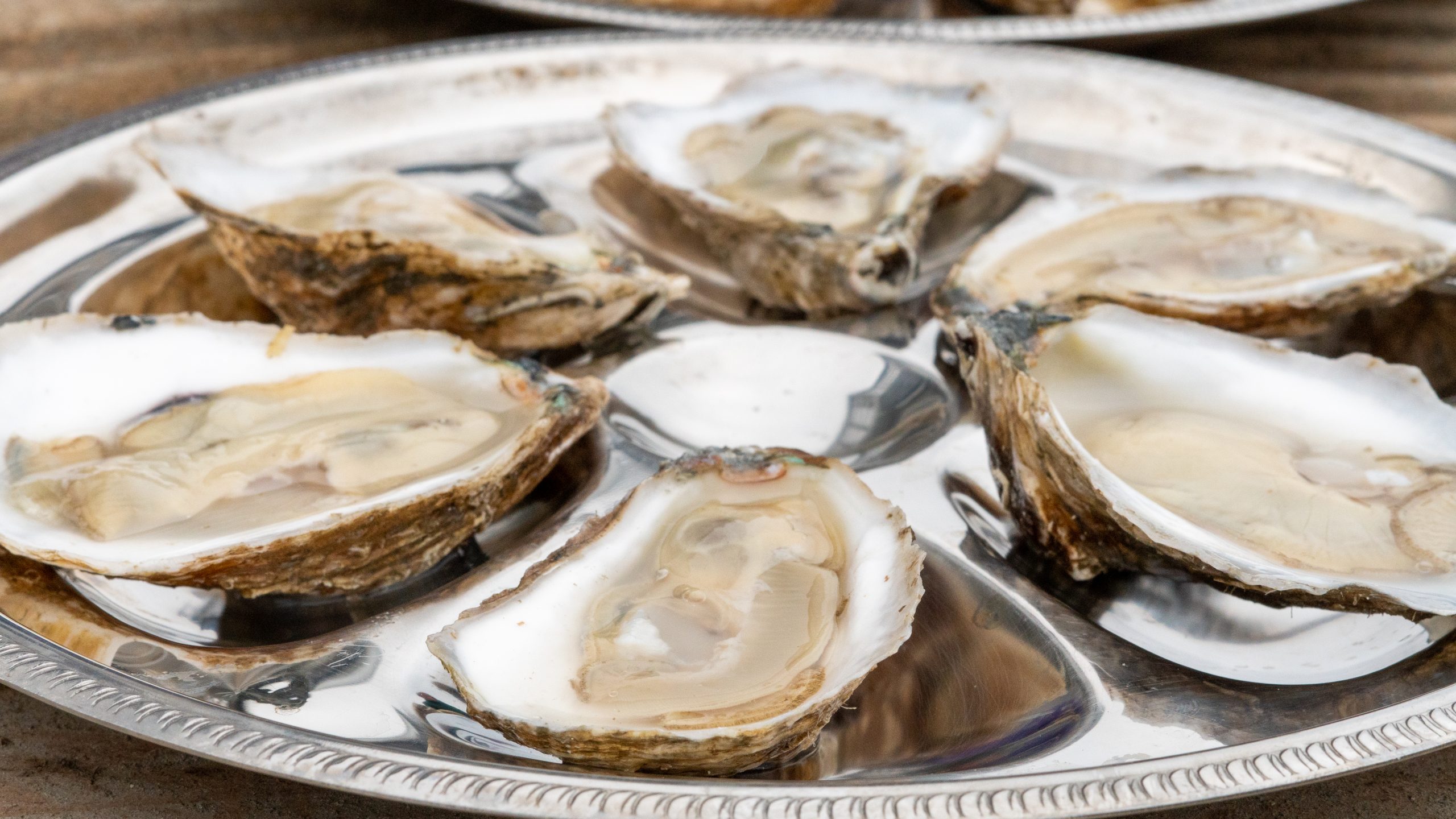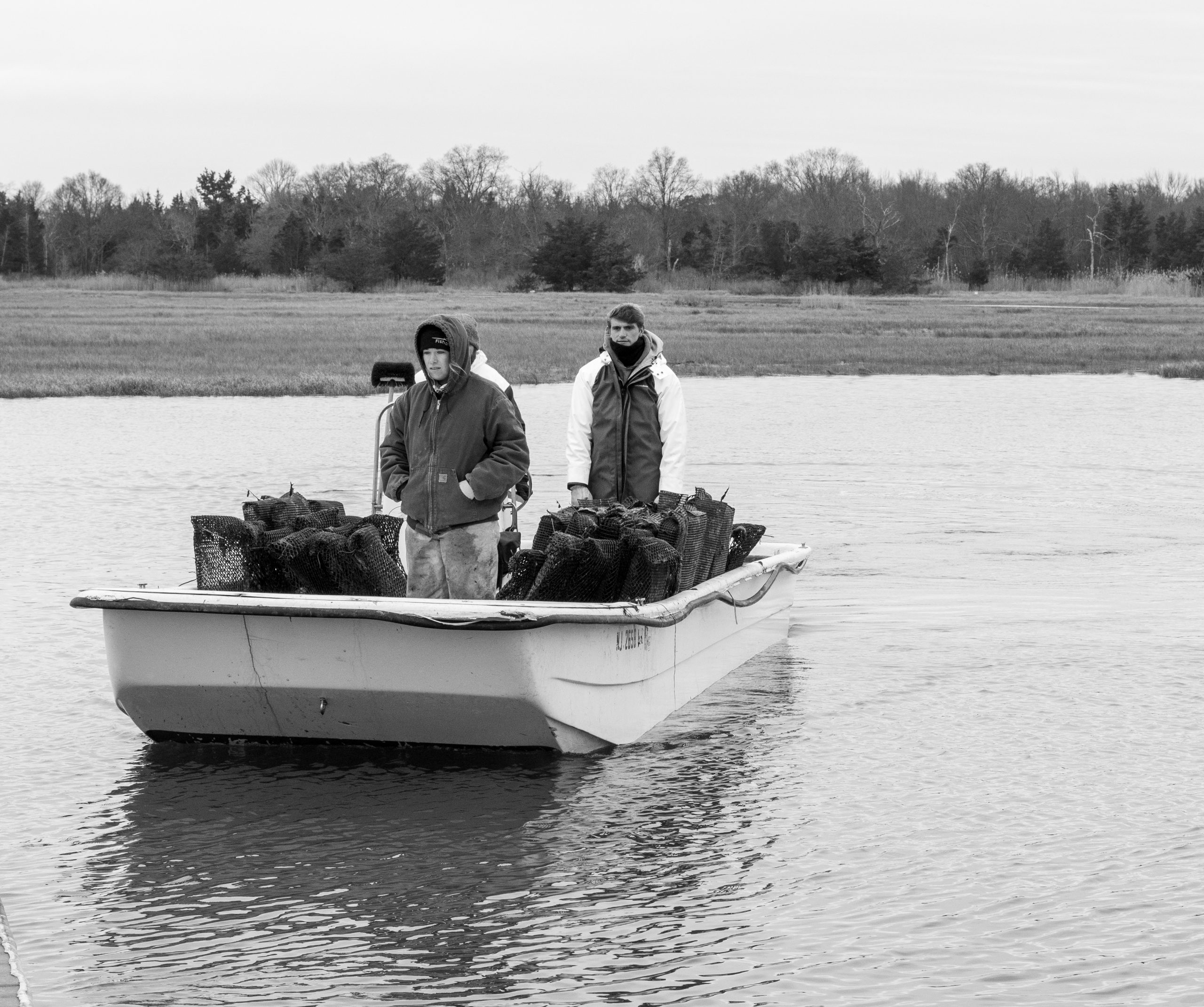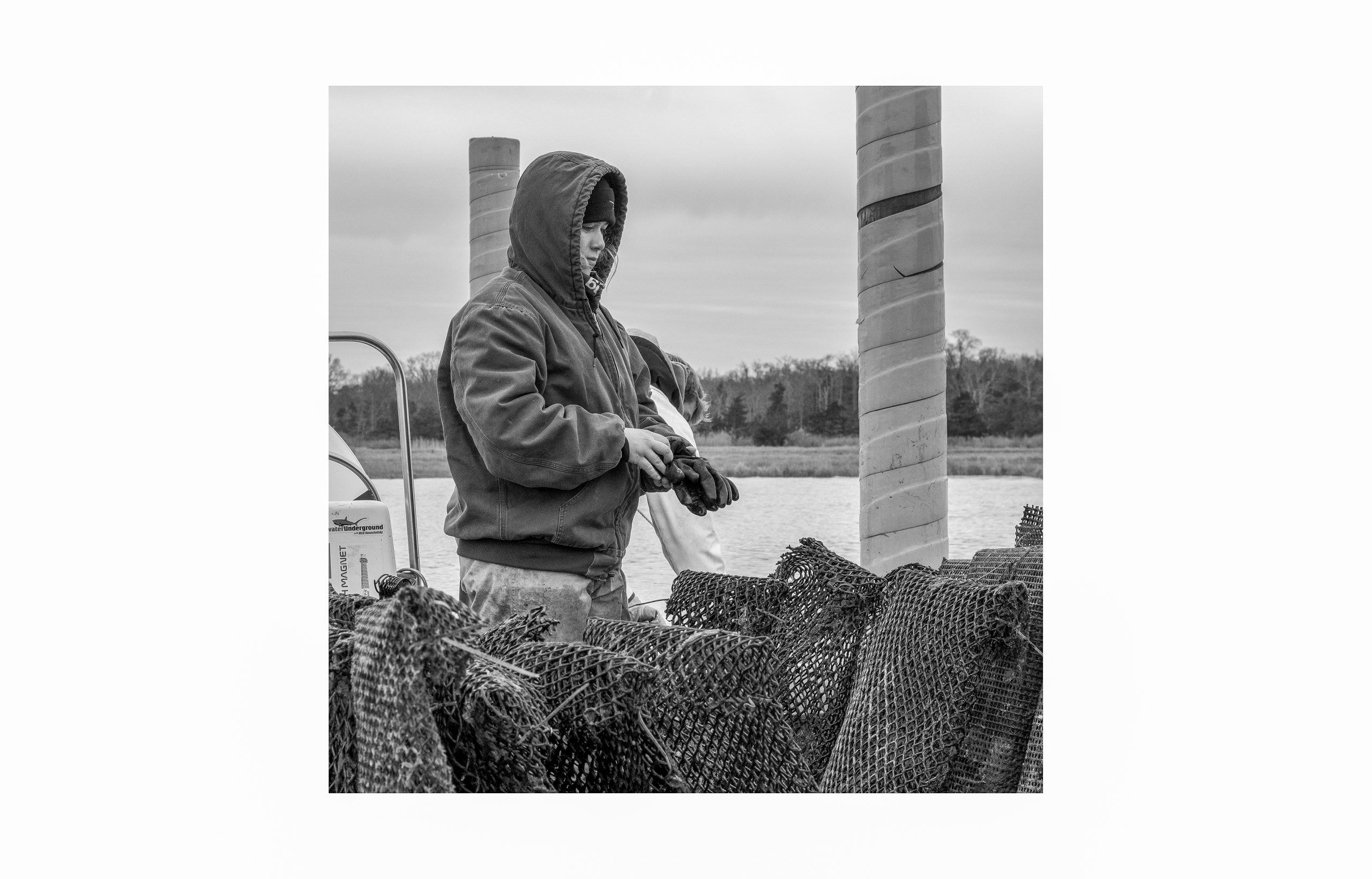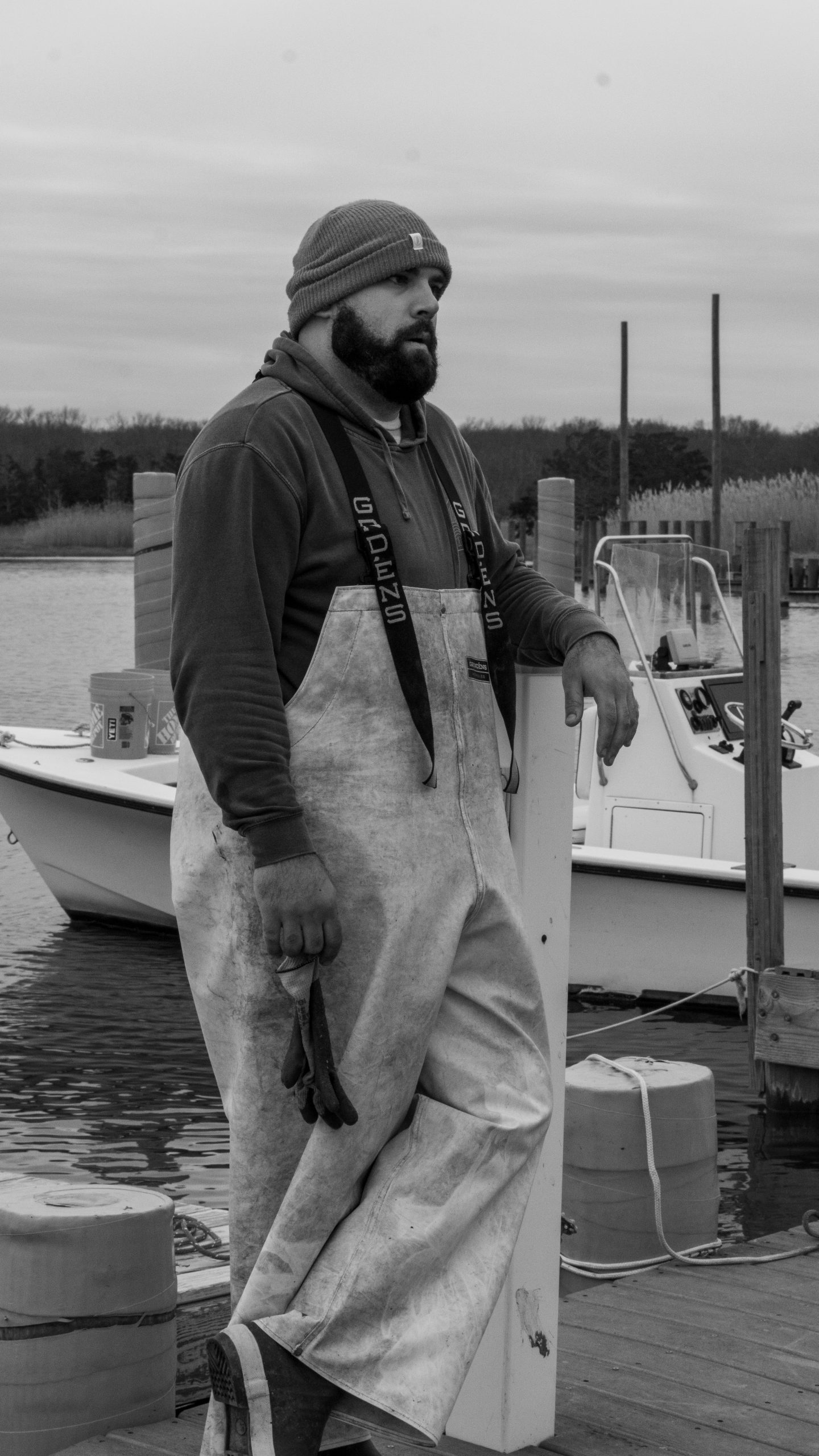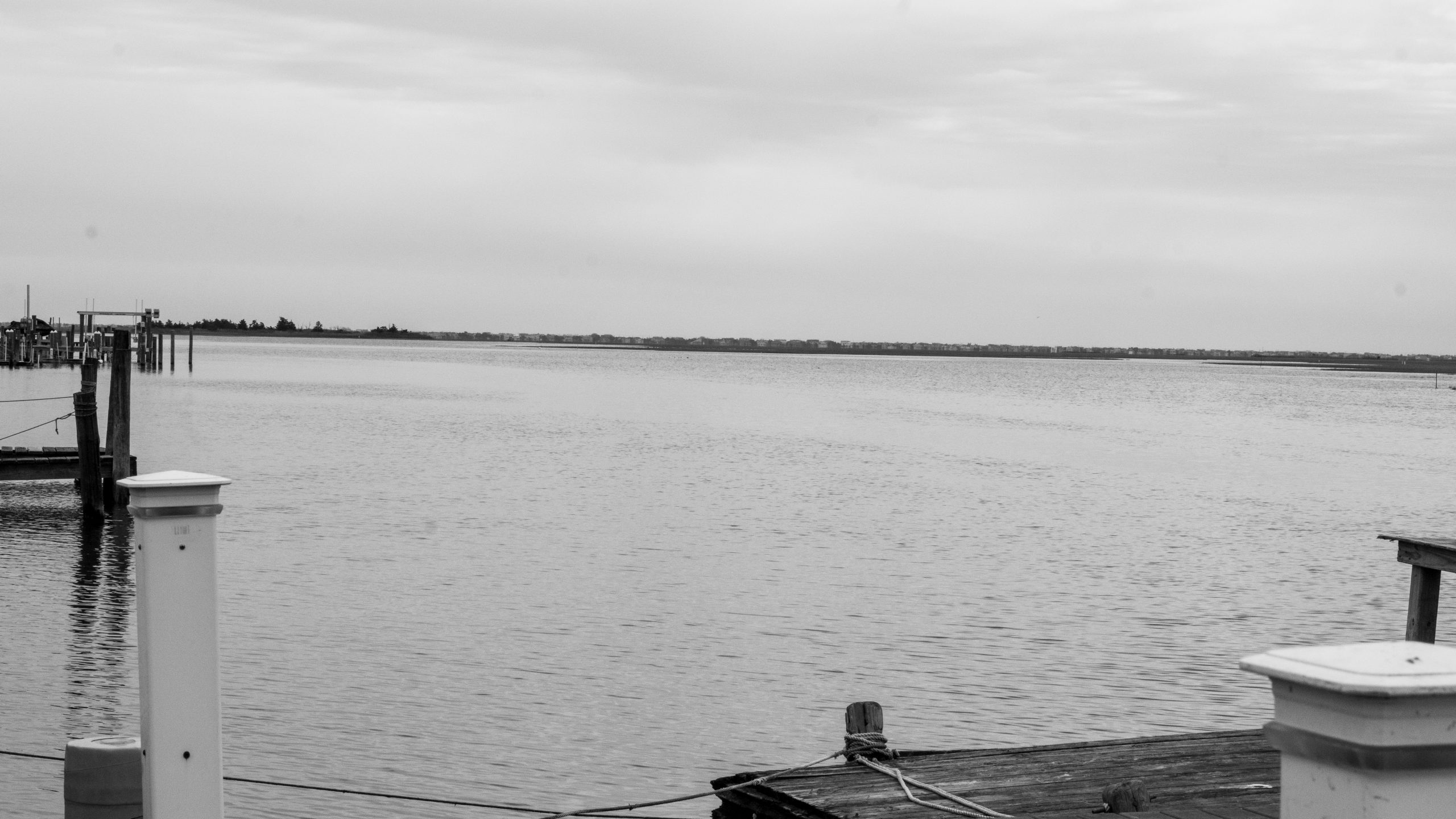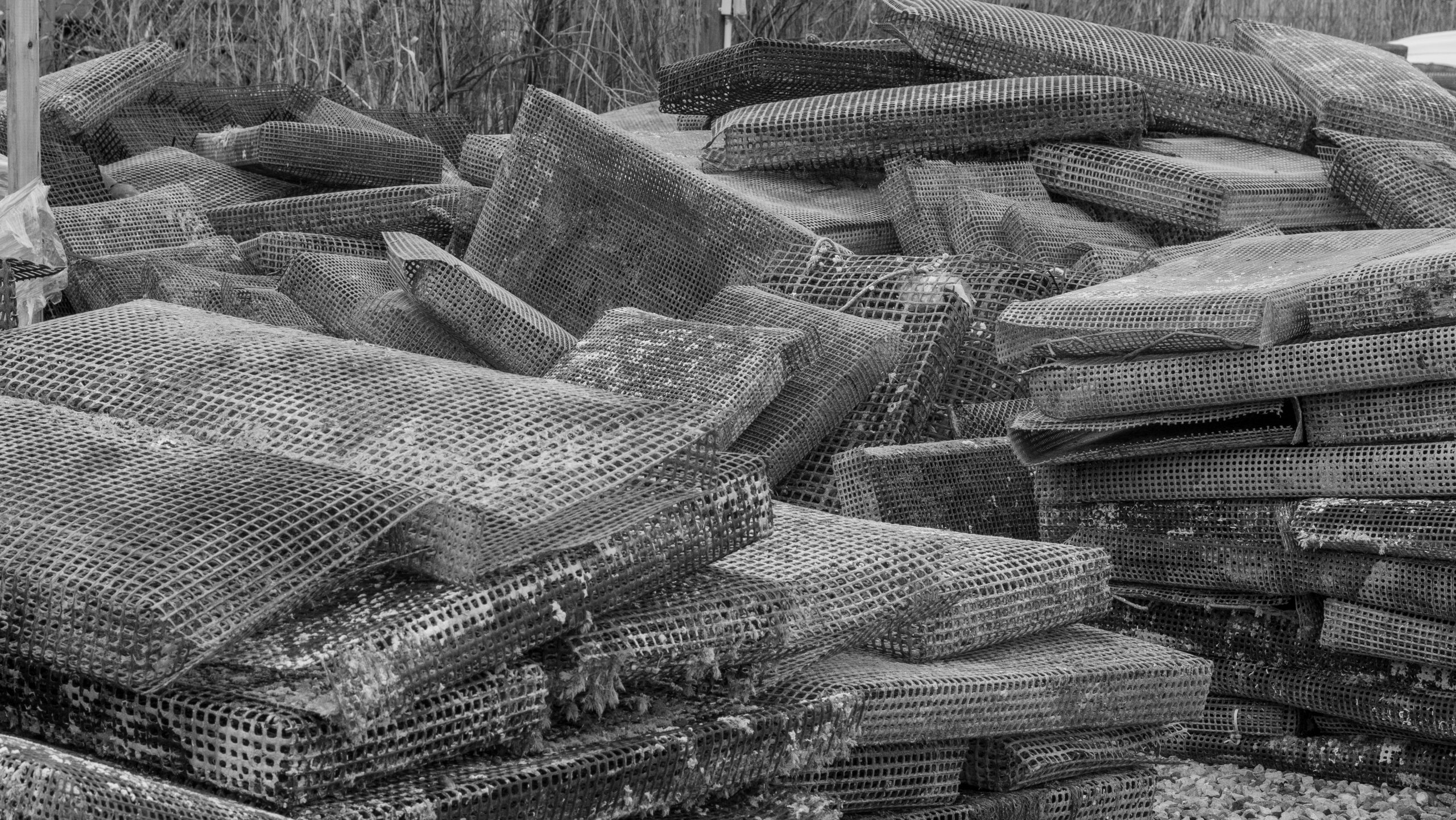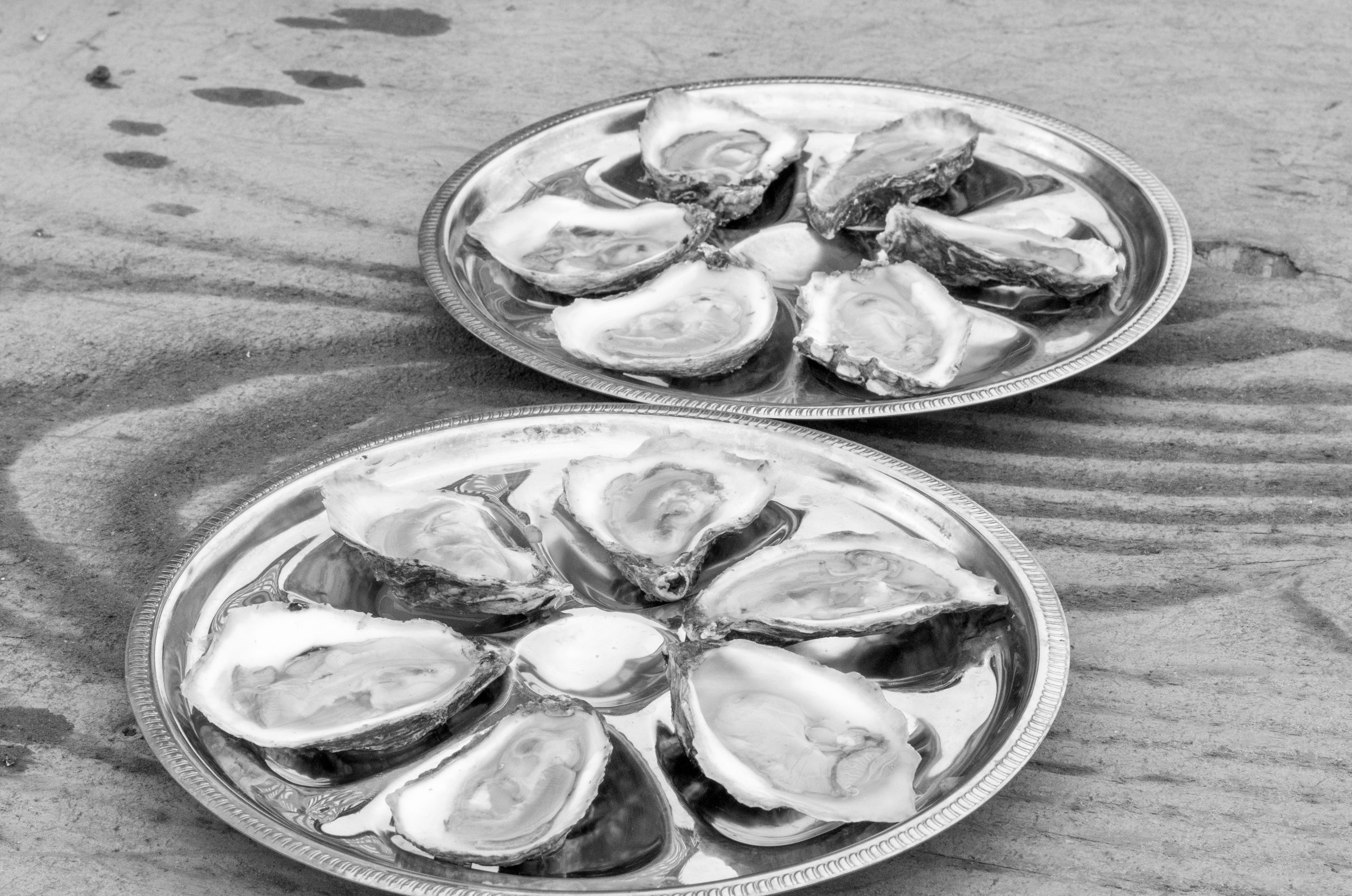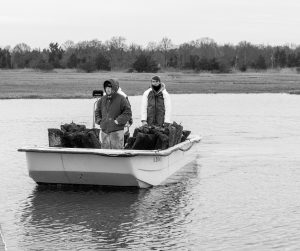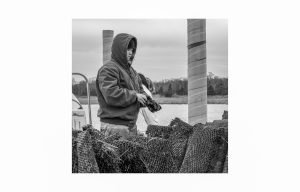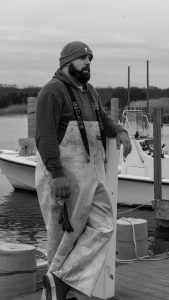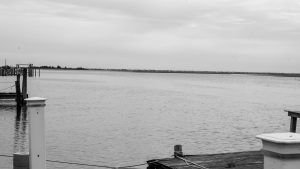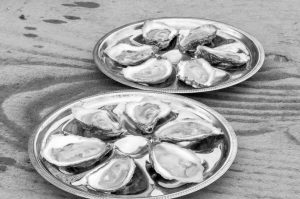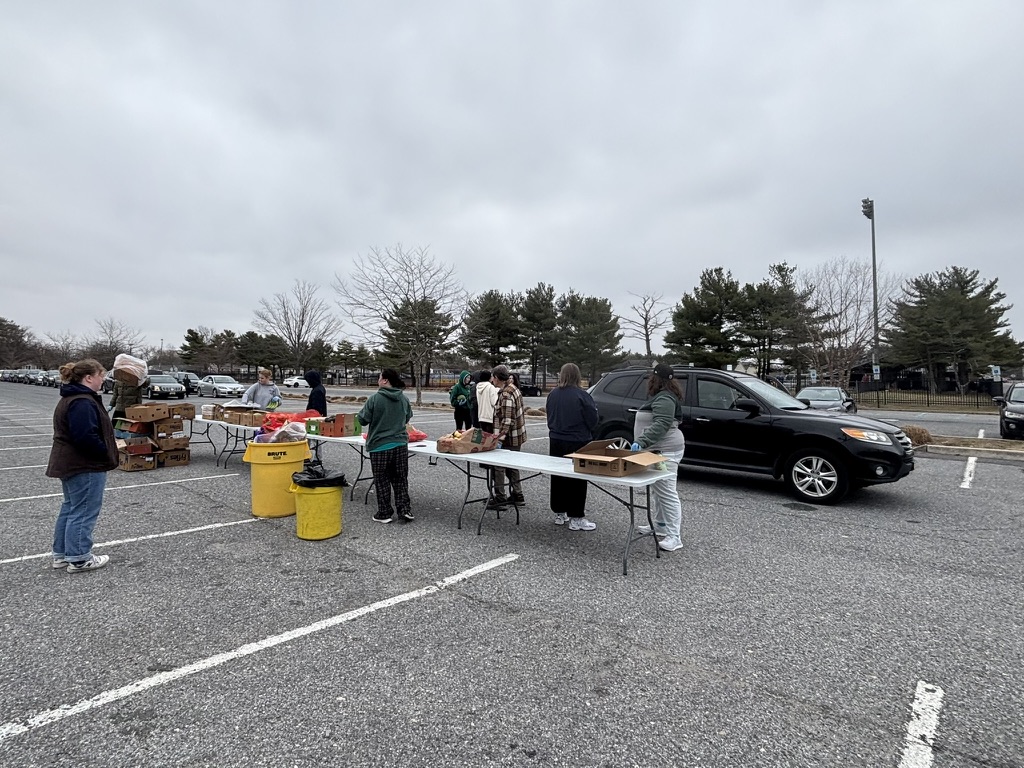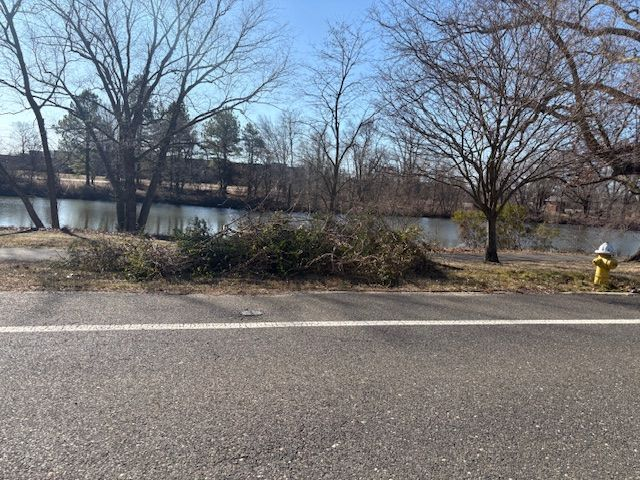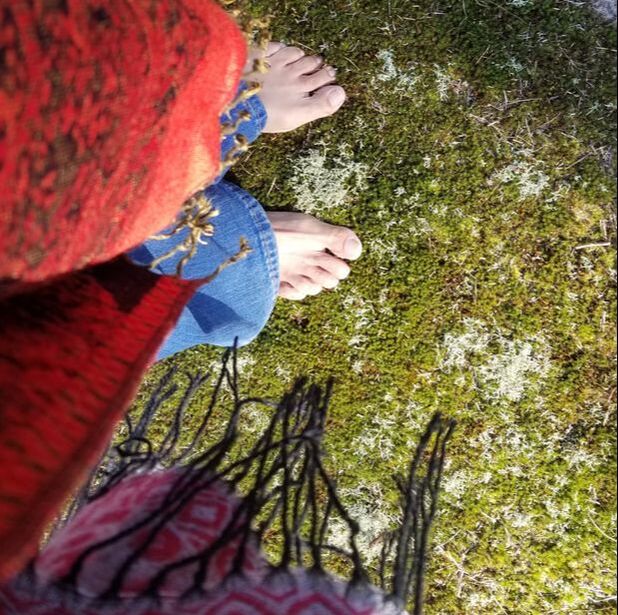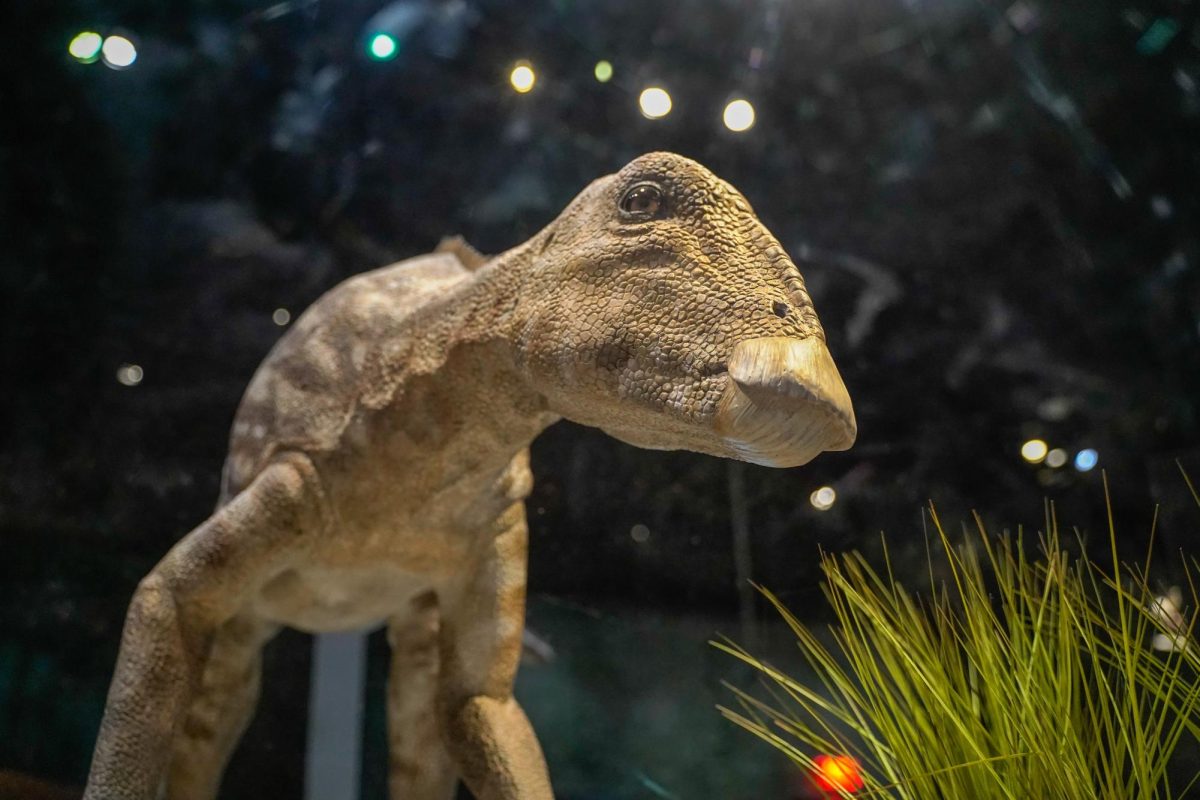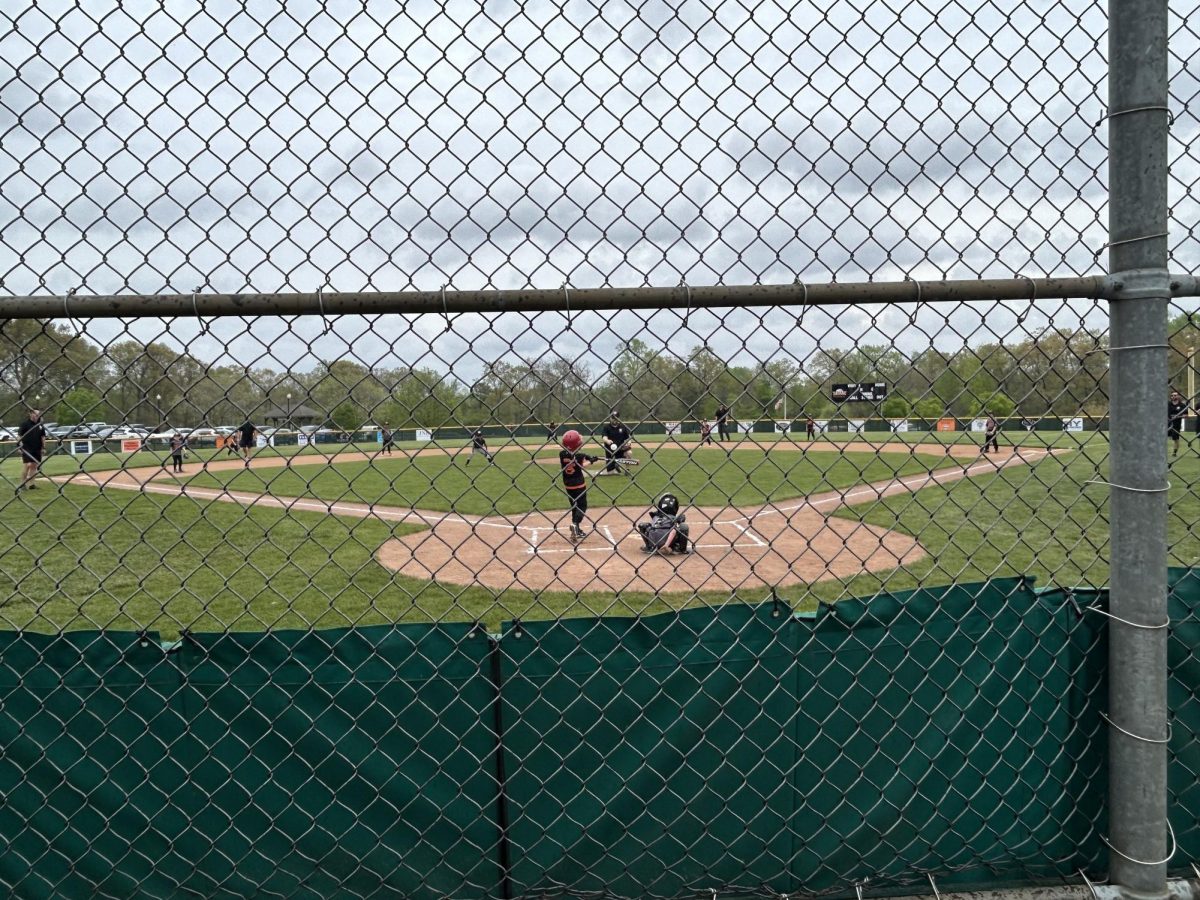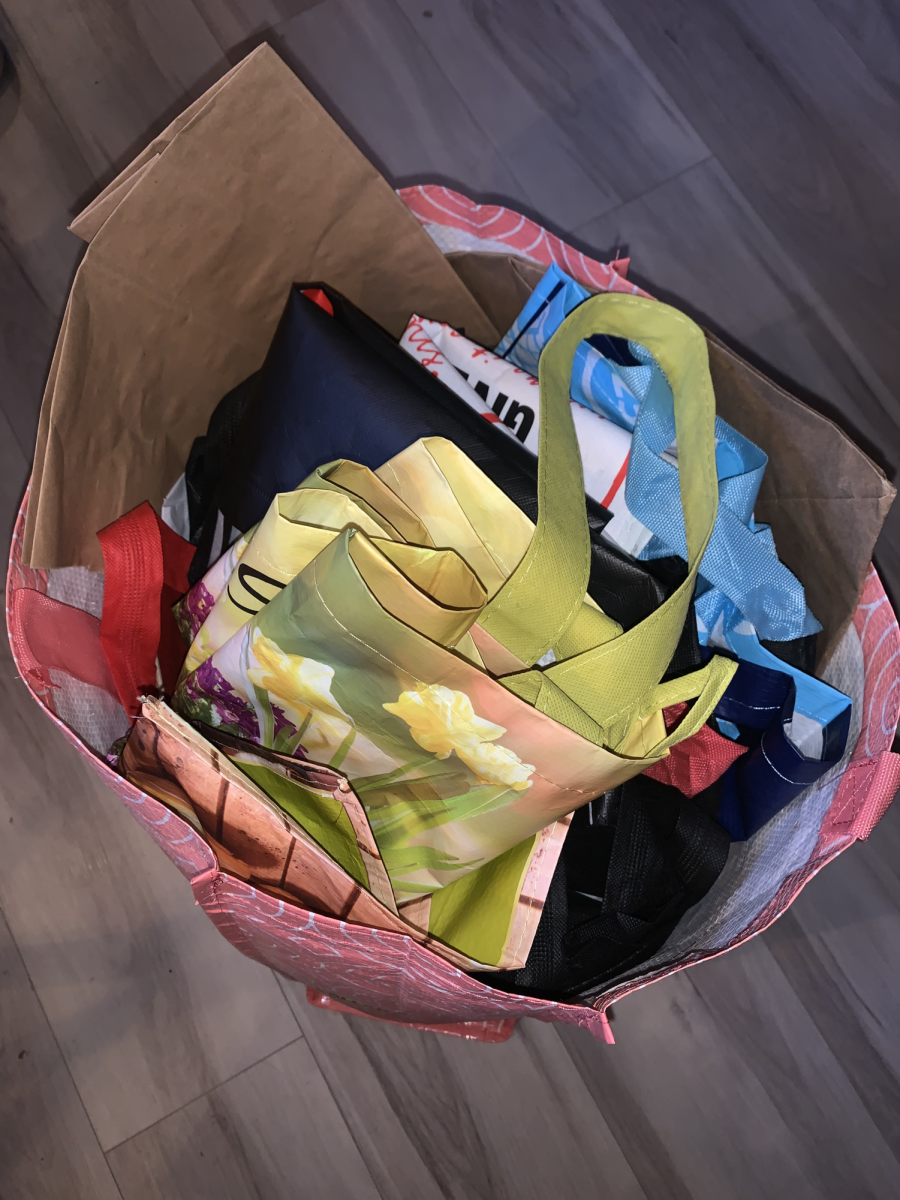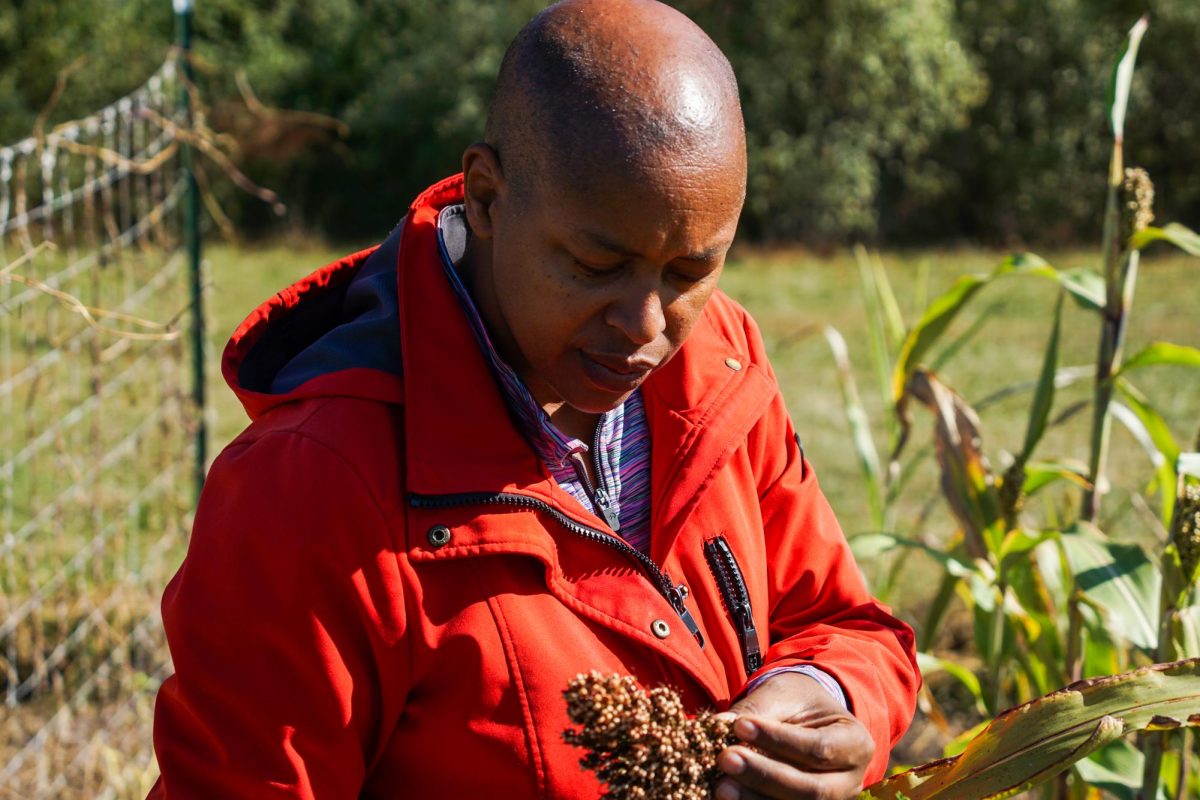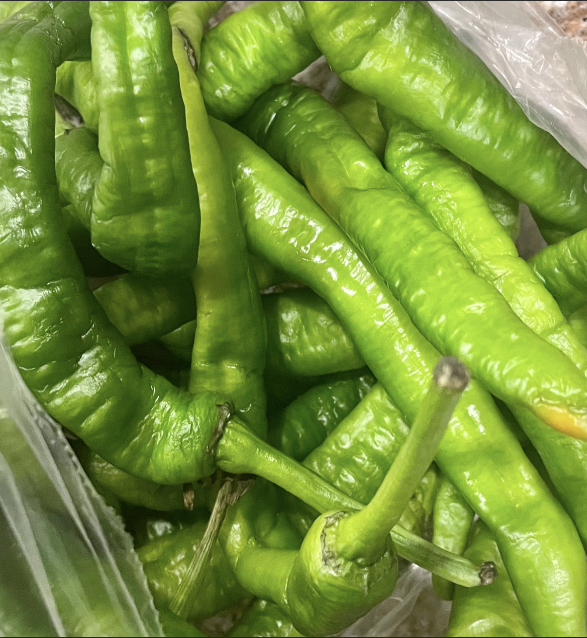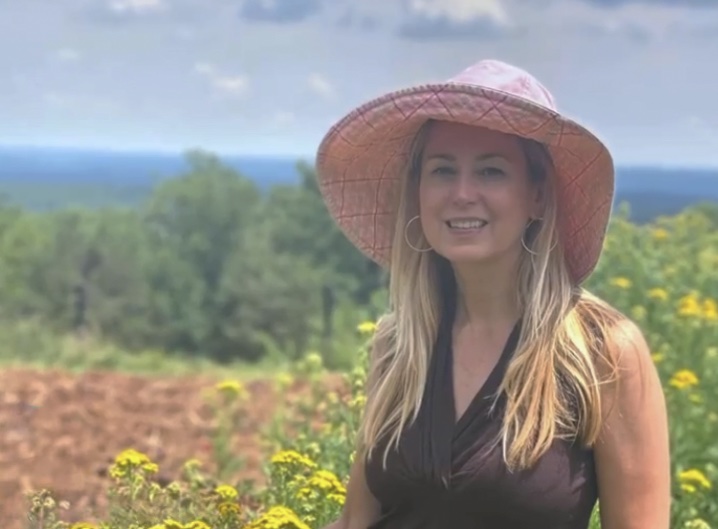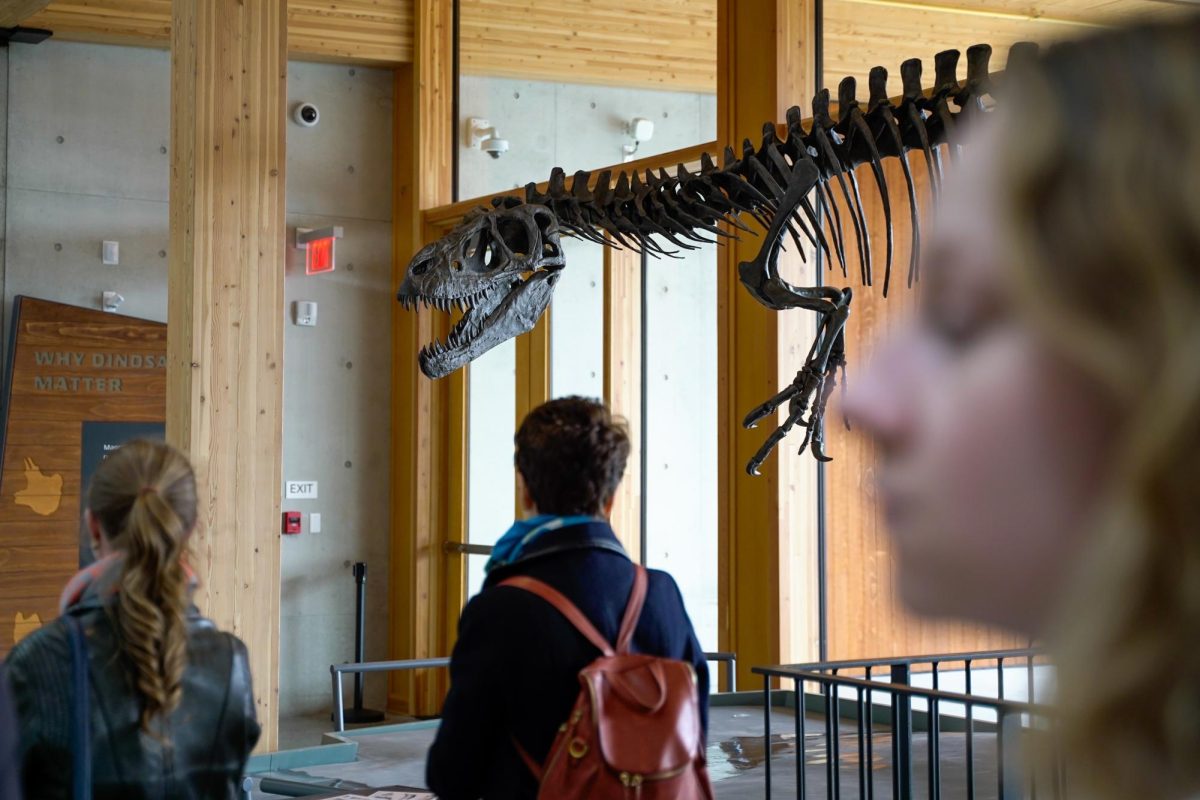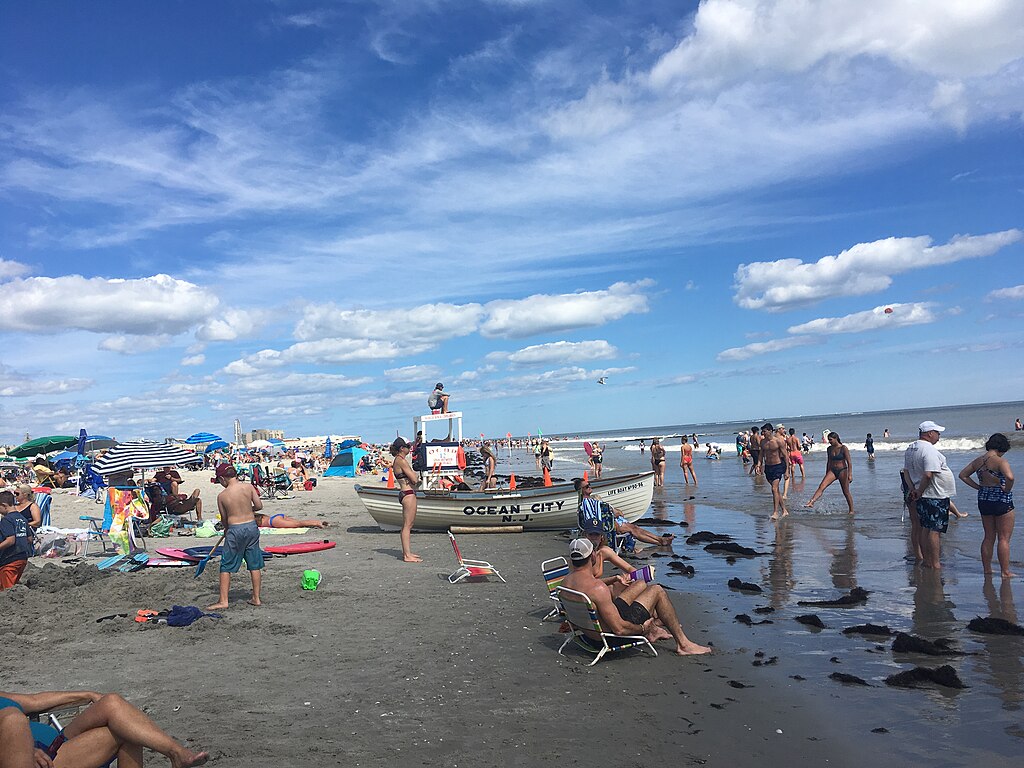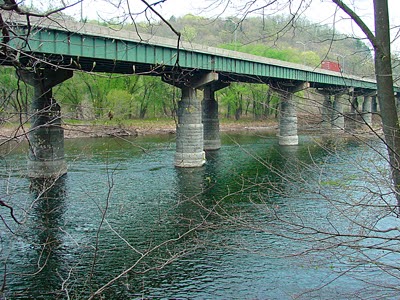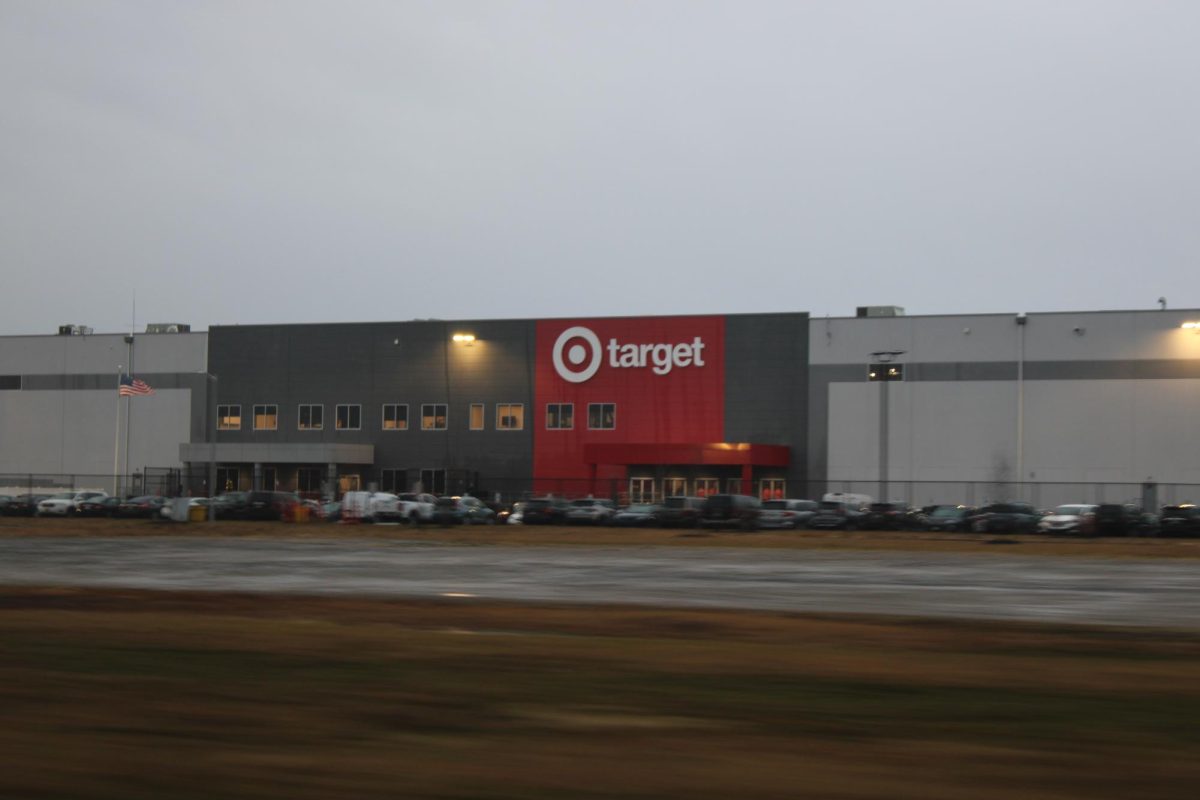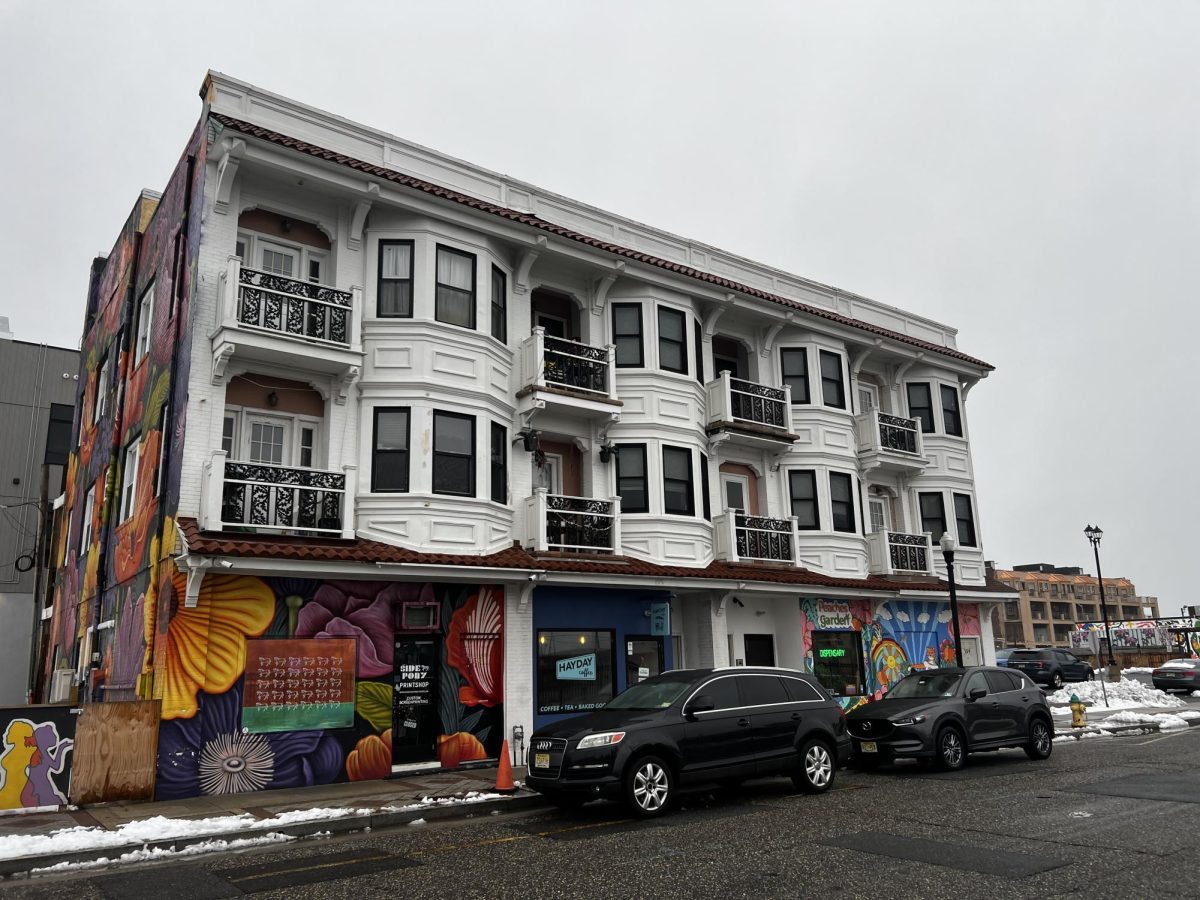Video Produced by Jada Ali | Camera/Sound by Joseph Pidgeon and AJ Amoroso
“Oysters taste like the water and everything that’s in it,” said Scott Lennox, as he cracks open half a dozen oysters and lays them out on a platter for a group of visitors, some of whom have never tasted shellfish before.
Lennox and his business partner Matt Gregg, founded the Barnegat Oyster Collective in 2016, a sustainable farm-to-table shellfish growing organization dedicated to expanding the industry in New Jersey. Along with a dozen farming members, they deliver quality oysters to restaurants, food cooperatives, and individual customers.
The group has helped revitalize the area’s shellfish population in Barnegat Bay, which over the last century has been depleted by pollution, disease, and over-harvesting. They have also become leading advocates for shellfish aquaculture, a fast-growing sector in New Jersey with an annual economic impact of $36 million.
Recently, they were successful in efforts to have aquaculture added to the state’s Right to Farm Act, which gives oyster farmers greater protections.
And they believe that the experience of oysters can help lead to change.
“People come, learn, taste, and then go back to their home and tell everybody how cool it was,” said Lennox. “The more people that know about it, the more that they’re going to want to protect the bay.”
Photo slide show by Edi Doh
From Seed to Table
Growing marketable oysters is not a quick process. It takes about two years before they are ready to be sold to restaurants and consumers.
The process begins with Lennox and Gregg purchasing “seed” oysters from a hatchery. They then place them in nursery tanks, a controlled environment where raw bay water is pumped in, giving the tiny animals the food and oxygen they need to begin growing. Once they’ve reached a half-inch in size, they’re put into “grow-out bags” that are stored in a cage that sits in the water.
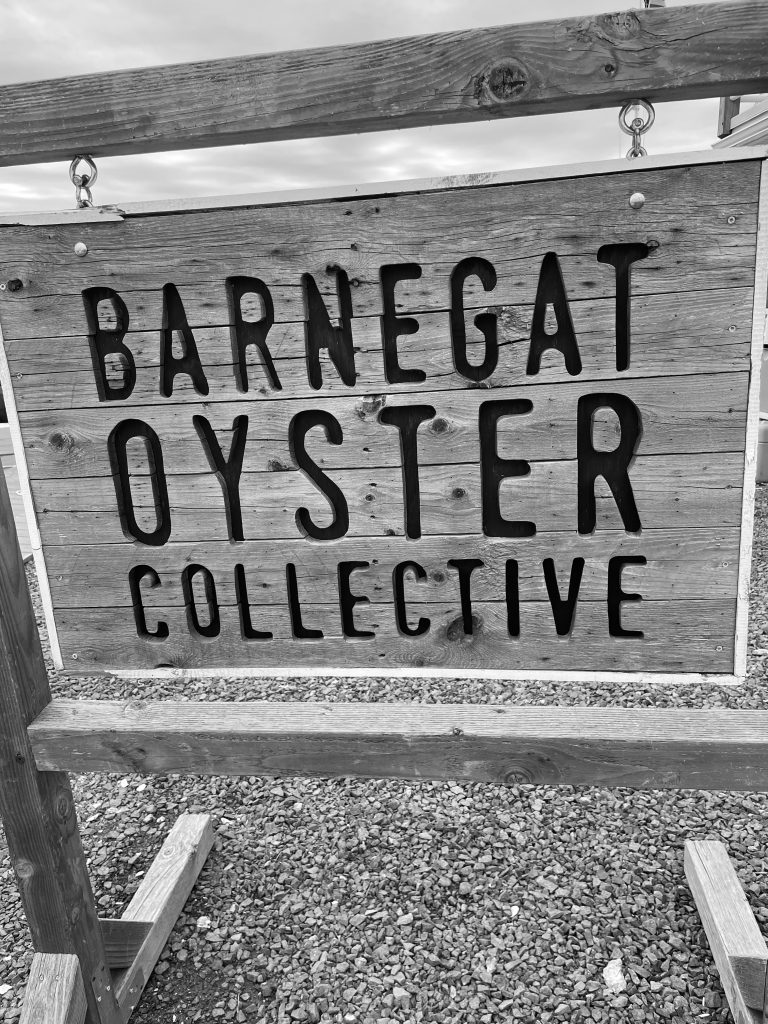 After another year to a year and a half of care, including being sorted, cleaned, and dried, the oysters are harvested and prepared for sale.
After another year to a year and a half of care, including being sorted, cleaned, and dried, the oysters are harvested and prepared for sale.
Beyond the growing process, the Collective farmers face an array of challenges, like changes in sea level and temperature, predator migration, and residential development in the area.
One of the biggest challenges came very early on. Lennox and Gregg had been farming oysters in the bay prior to the Collective’s formation. When Superstorm Sandy hit in 2012, they were faced with an immense challenge.
Though they were able to harvest their oysters a week before Sandy’s landfall, the Category 3 hurricane destroyed their equipment and oyster beds. It was clear to them that they had to figure out how they would fulfill their dream of starting an oyster aquaculture business while at the same time being aware of, and resilient against, the threat of more storms of Sandy’s magnitude.
It is ecosystem conservation, but it’s something tangible. You come out and you taste it, you feel it, smell it, you go out on the water and you have an experience with it.
Adapting to Climate Change on the Bay
Barnegat Bay is perfect for growing oysters, according to Lennox. But there are also challenges.
Pollution from run-off is a significant problem and the state is implementing new strategies to improve water quality. Oysters are a key part of these efforts, as they act as natural filters and are essential to the health of estuaries.
Increased concentrations of greenhouse gasses in the atmosphere, as well as pollution, have caused the ocean to absorb vast quantities of heat.
This rise in water temperature has influenced the migration of new predators, like cownose rays, into Barnegat Bay, according to Lennox.
The rays feed on growing oysters and can have a significant impact on both aquaculture operations as well as efforts to restore degraded oyster beds. While oysters and hard clams are not a significant part of a ray’s diet, intense feeding in one localized area does occur – and can be devastating.
“They come in schools that could be up to 70 strong, and they remember where the good feeding spots are,” said Lennox. “They didn’t used to be here in New Jersey; they’re known for being in points further South. But as we have warming oceans, they’re slowly populating bays up the coast.”
Though the rise in water temperature presents threats, for the time being, it also allows growers to reap some rewards, including a longer season. On average, spring starts earlier and fall starts later, allowing for a longer growing and harvest period than in decades past.
But this positive will be a negative down the line, as Lennox acknowledged the less favorable impact that global warming will have on oyster farming in the future.
“There are immediate benefits,” said Lennox. “But with long-term scary stuff…that is a big picture concern of ours.”
Protection for Shellfish Farmers
To better prepare for this uncertain future, the Collective is also a part of The Shellfish Growers Climate Coalition, a group of restaurants, farmers, and other stakeholders in the industry that lobbies for climate policy.
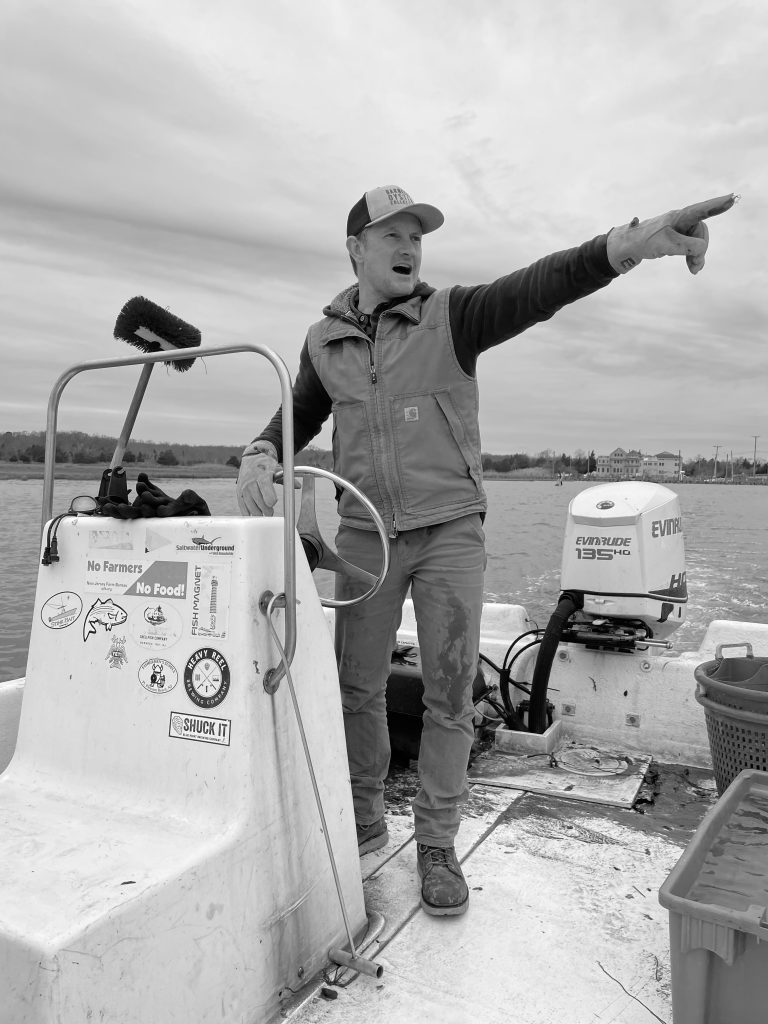 The group won a key victory recently with an amendment to the state’s Right to Farm Act, which now classifies aquatic agriculture entities as farmers. This gives them the same state-backed protection that land farmers have held since the introduction of the original piece of legislature in 1983. A key aspect of the legislation is language that allows oyster farmers in New Jersey to grow and harvest without the fear of disruption from developers or complaints from property owners.
The group won a key victory recently with an amendment to the state’s Right to Farm Act, which now classifies aquatic agriculture entities as farmers. This gives them the same state-backed protection that land farmers have held since the introduction of the original piece of legislature in 1983. A key aspect of the legislation is language that allows oyster farmers in New Jersey to grow and harvest without the fear of disruption from developers or complaints from property owners.
In the future, the Collective hopes to further expand and grow the oyster farming footprint in Barnegat Bay by committing to restoration and education.
This involves repopulating the bay’s habitat by growing oysters on shorelines and on shell to make reef structures.
The Collective is looking for partnerships with educational organizations in the area, specifically trade schools like Ocean County Vocational Technical School and its culinary program, as well as Atlantic Cape Community College so that restaurant owners, chefs, and servers better understand the shellfish they are selling to consumers.
Lennox believes educating people about the oyster growing process, as well as about the consumer and culinary side of aquaculture, will lead to a rise in interest in their market. This will in turn, he hopes, inspire people to get involved in restoration efforts in the area.
“Aquaculture is an understandable story that people can engage with,” said Lennox. “The ultimate purpose of it is ecosystem conservation, but it’s something tangible. You come out and you taste it, you feel it, smell it, you go out on the water and you have an experience with it.”
“And those experiences are what drive responsible humans to make responsible decisions about the environment.”
Related Content
Watch a video of the South Jersey Climate News team visiting the Barnegat Oyster Collective
